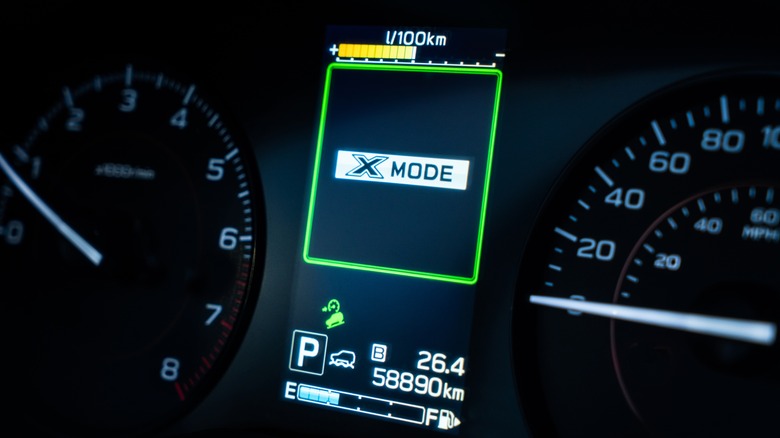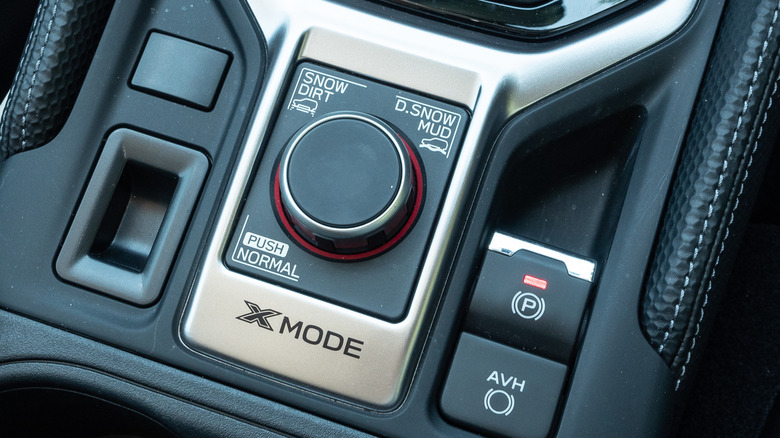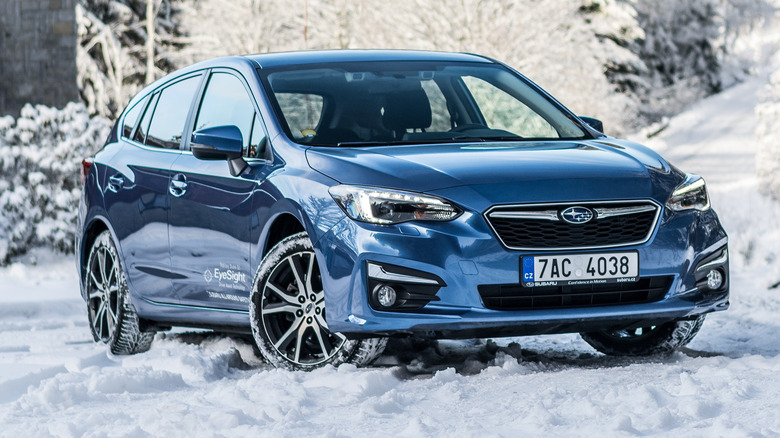
If you grew up watching rallying in the '90s, you'd probably remember a blue Subaru Impreza flying over and drifting through snow embankments. The Impreza's legendary boxer engine and all-wheel drive helped Subaru win multiple World Rally Championships and get established as a maker of highly capable go-anywhere vehicles. If that didn't convince you, check out YouTube videos of Subaru cars navigating snow. Besides Subaru's cool Badge of Ownership program, its snowplowing capabilities are one of the prime
reasons why it is loved by customers, especially those living in the snow belt.
X-Mode, a staple in most Subaru vehicles, works with the All Wheel Drive (AWD) system to offer the best traction in slippery driving conditions like snow or mud. Subaru offers two variants — standard X-Mode and X-Mode Dual Mode, which lets you choose between Snow/Dirt and Deep Snow/Mud modes.
To understand how X-Mode works, we need to understand Subaru's Symmetrical AWD system, which works by splitting power evenly between the front and rear tires, using sensors that monitor traction in each wheel. If the sensor detects a loss of traction in one particular wheel, the system redirects power to the remaining three wheels with the help of its Vehicle Dynamics Control (VDC) system. VDC applies brakes to the individual wheel lacking power and sends power to opposing wheels (like a limited slip differential). X-Mode offers a fine-tuned approach to this by also engaging other key vehicle systems.
Read more: These Cars Are Going To Age Terribly
X-Tra Precision

X-Mode offers better vehicle control and stability in low-traction road conditions by adjusting engine throttle response, the transmission, the AWD drivetrain, and other key systems like VDC and Hill Descent Control (HDC). Initial throttle response will gradually increase to offer maximum power. Simply put, if you put pedal to the metal in low-traction situations, you will end up with wheel spin. However, if you gradually apply throttle, the wheels have a better chance of regaining grip. X-Mode also keeps the transmission in a lower gear to utilize more of the engine's performance, distributed to wheels that have grip.
X-Mode increases the AWD and VDC reaction times and offers a limited-slip-differential-like control where brakes are applied much earlier and faster to the spinning wheel. It also works in conjunction with Hill Descent Control, taking full control of engine response and braking more effectively for a better downhill drive, though only at speeds below 12 miles per hour.
X-Mode Dual mode packs in all the advantages of the standard X-Mode system with an added setting for Deep Snow/Mud mode. In these road conditions, keeping a forward momentum is crucial, and the system does it by keeping the wheels spinning instead of braking.
When Do I Need X-Mode?

Unlike Subaru's All Wheel Drive, which is always engaged, you have to manually engage X-Mode. Depending on your vehicle model, it is either a small button near the gear lever and next to the Auto Vehicle Hold button, or an icon on your touchscreen infotainment system. For the X-Mode Dual Mode system, you also need to choose between Snow/Dirt or Deep Snow/Mud modes. X-Mode is available in most Subaru vehicles sold in the U.S., even the new 2026 Subaru Uncharted electric crossover.
X-Mode works best in conditions like a muddy road, rocky trail, icy hill, or muddy path. It's useful to navigate slippery conditions like snow, slush, or soft terrain. X-Mode is designed to offer you the best traction in these settings.
It has its limitations, though. X-mode is not similar to a Four Wheel Drive system, so don't expect to do hardcore off-roading and rock crawling. Also, this is a slow-speed system, so while you can activate X-Mode up to speeds of 25 mph, it doesn't work above speeds of 18 mph. For it to work downhill with Hill Descent Control, speeds have to be lower than 12 mph.
Want more like this? Join the Jalopnik newsletter to get the latest auto news sent straight to your inbox...
Read the original article on Jalopnik.











